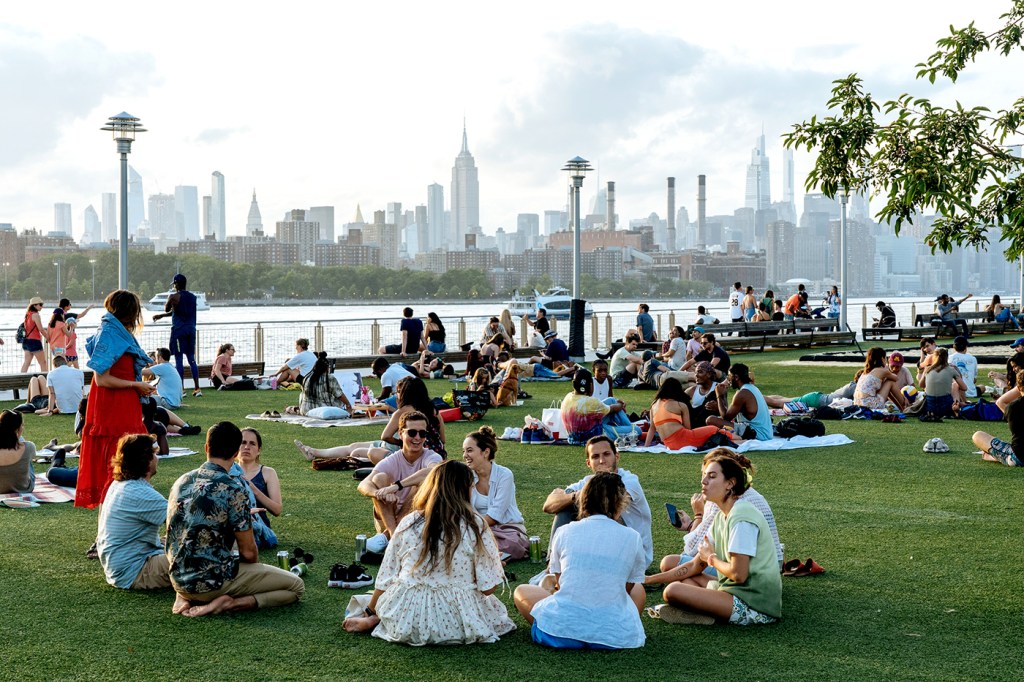American cities survived COVID-19. Here’s how to prepare them for the next pandemic.

Speculation about the impact of COVID-19 on America’s thriving cities came almost as soon as the disease itself—and the diagnosis was usually grim. Plunging rents in New York and San Francisco indicated residents were fleeing their densely-packed urban lives for quarantine living in rural or suburban areas, perhaps never to return.
But cities appear to be bouncing back despite the abrupt departures. Sara Jensen Carr, an associate professor of architecture who studies the intersection of health and urban planning, talks about the longstanding bias against cities in the U.S. and how the COVID-19 pandemic can change them for the better.
Why do people fear cities during a pandemic?
During the Industrial Revolution it was very dirty and very polluted in cities. You had substandard housing—especially for immigrants and factory workers—that weren’t ventilated and so there were infectious diseases and contagious diseases like cholera and yellow fever that spread very quickly. People were looking at cities and they saw that the largest outbreaks were in these types of crowded housing developments, and the housing was in very dense areas, so people became very concerned about density.
What have you noticed about Americans in particular when it comes to cities?
Overall, there’s an American feeling of anti-urbanism. Cities were thought of as incubators of disease for much of American history. As a country, we’ve spent hundreds of years thinking that cities are unhealthy places to live, and that extends to the disinvestment and racist policies that were in cities in the ’70s and ’80s that led to the urban crisis and the decline of inner cities. So that further solidifies the city as an unhealthy place to live [in people’s minds].
I would think that the more people in an area, the easier it is to catch a contagious disease. Can you explain why that may not be the case?
Density itself doesn’t really have an association with COVID-19. Density is different from overcrowding, which is the real issue. Diseases spread when people are living in cramped, substandard conditions, and many can’t quarantine and risk exposure. For example, cities with a higher percentage of immigrants were hit harder than Boston.
How have earlier pandemics shaped our present-day cities?
During the cholera outbreaks in the 1800s, infected water would collect along the winding, uneven city streets. There was a coordinated movement to straighten street plans and improve access to fresh water. Our big urban parks, especially in Boston and New York, came after cholera and tuberculosis outbreaks. After the 1918 flu pandemic, which is probably the last infectious pandemic we dealt with in the United States, a lot of our buildings were built for better air ventilation.
Do you think COVID-19 will spark changes to city planning?
We really think about landscape as part of a city’s public health infrastructure, especially parks. We know parks are good for health, because not only do they provide a place for people to go, but they provide ecosystem services, like catching stormwater and cleaning the air. We also know that parks are not equitably distributed, and parks tend to be in wealthier and whiter neighborhoods. Plus, building a park in an existing city is a much, much more difficult proposition. So, there’s a lot of work to do.
Are there other urban development changes that might stem from the pandemic?
One of the major things to look at is what will actually happen with remote work. That could have an impact if people aren’t going to the city every day. What happens to that office space downtown? Does that get converted? It’s the same thing with retail: People have gotten used to shopping online, so that physical landscape may also change.
For media inquiries, please contact media@northeastern.edu.





